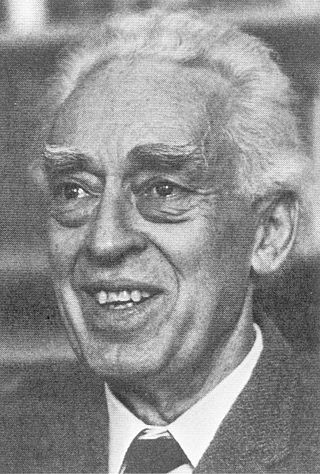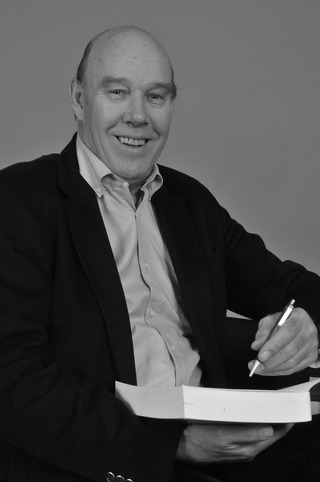Related Research Articles
Keynesian economics are the various macroeconomic theories and models of how aggregate demand strongly influences economic output and inflation. In the Keynesian view, aggregate demand does not necessarily equal the productive capacity of the economy. It is influenced by a host of factors that sometimes behave erratically and impact production, employment, and inflation.
Post-Keynesian economics is a school of economic thought with its origins in The General Theory of John Maynard Keynes, with subsequent development influenced to a large degree by Michał Kalecki, Joan Robinson, Nicholas Kaldor, Sidney Weintraub, Paul Davidson, Piero Sraffa and Jan Kregel. Historian Robert Skidelsky argues that the post-Keynesian school has remained closest to the spirit of Keynes' original work. It is a heterodox approach to economics.

Piero Sraffa, FBA was an influential Italian economist who served as lecturer of economics at the University of Cambridge. His book Production of Commodities by Means of Commodities is taken as founding the neo-Ricardian school of economics.
This aims to be a complete article list of economics topics:
Business cycles are intervals of general expansion followed by recession in economic performance. The changes in economic activity that characterize business cycles have important implications for the welfare of the general population, government institutions, and private sector firms. There are numerous specific definitions of what constitutes a business cycle. The simplest and most naïve characterization comes from regarding recessions as 2 consecutive quarters of negative GDP growth. More satisfactory classifications are provided by, first including more economic indicators and second by looking for more informative data patterns than the ad hoc 2 quarter definition.

Nicholas Kaldor, Baron Kaldor, born Káldor Miklós, was a Cambridge economist in the post-war period. He developed the "compensation" criteria called Kaldor–Hicks efficiency for welfare comparisons (1939), derived the cobweb model, and argued for certain regularities observable in economic growth, which are called Kaldor's growth laws. Kaldor worked alongside Gunnar Myrdal to develop the key concept Circular Cumulative Causation, a multicausal approach where the core variables and their linkages are delineated. Both Myrdal and Kaldor examine circular relationships, where the interdependencies between factors are relatively strong, and where variables interlink in the determination of major processes. Gunnar Myrdal got the concept from Knut Wicksell and developed it alongside Nicholas Kaldor when they worked together at the United Nations Economic Commission for Europe. Myrdal concentrated on the social provisioning aspect of development, while Kaldor concentrated on demand-supply relationships to the manufacturing sector. Kaldor also coined the term "convenience yield" related to commodity markets and the so-called theory of storage, which was initially developed by Holbrook Working.

Underconsumption is a theory in economics that recessions and stagnation arise from an inadequate consumer demand, relative to the amount produced. In other words, there is a problem of overproduction and overinvestment during a demand crisis. The theory formed the basis for the development of Keynesian economics and the theory of aggregate demand after the 1930s.

Heterodox economics is any economic thought or theory that contrasts with orthodox schools of economic thought, or that may be beyond neoclassical economics. These include institutional, evolutionary, feminist, social, post-Keynesian, ecological, Austrian, humanistic, complexity, Marxian, socialist, anarchist and Modern monetary theory economics.
In the history of economic thought, a school of economic thought is a group of economic thinkers who share or shared a common perspective on the way economies work. While economists do not always fit into particular schools, particularly in modern times, classifying economists into schools of thought is common. Economic thought may be roughly divided into three phases: premodern, early modern and modern. Systematic economic theory has been developed mainly since the beginning of what is termed the modern era.

Paul Davidson is an American macroeconomist who has been one of the leading spokesmen of the American branch of the post-Keynesian school in economics. He has actively intervened in important debates on economic policy from a position critical of mainstream economics.

The Brazilian Miracle was a period of exceptional economic growth in Brazil during the rule of the Brazilian military dictatorship, achieved via a heterodox and developmentalist model. During this time the average annual GDP growth was close to 10%. The greatest economic growth was reached during the tenure of President Emílio Garrastazu Médici from 1969 to 1973.
Kaldor's growth laws are a series of three laws relating to the causation of economic growth.

Macroeconomic theory has its origins in the study of business cycles and monetary theory. In general, early theorists believed monetary factors could not affect real factors such as real output. John Maynard Keynes attacked some of these "classical" theories and produced a general theory that described the whole economy in terms of aggregates rather than individual, microeconomic parts. Attempting to explain unemployment and recessions, he noticed the tendency for people and businesses to hoard cash and avoid investment during a recession. He argued that this invalidated the assumptions of classical economists who thought that markets always clear, leaving no surplus of goods and no willing labor left idle.
Athanasios "Tom" Asimakopulos was a Canadian economist, who was the "William Dow Professor of Political Economy" in the Department of Economics, McGill University, Montreal, Quebec, Canada. His monograph, Keynes's General Theory and Accumulation, reviews important areas of Keynes's General Theory and the theories of accumulation of two of his most distinguished followers, Roy Harrod and Joan Robinson.

Anwar M. Shaikh is a Pakistani American heterodox economist in the tradition of classical political economy and Marxian economics.

Anthony Philip Thirlwall was a British economist who was Professor of Applied Economics at the University of Kent. He made major contributions to regional economics; the analysis of unemployment and inflation; balance of payments theory, and to growth and development economics with particular reference to developing countries. He was the author of the bestselling textbook Economics of Development: Theory and Evidence now in its ninth edition. He was also the biographer and literary executor of the famous Cambridge economist Nicholas Kaldor. Perhaps his most notable contribution was to show that if long-run balance of payments equilibrium is a requirement for a country, its growth of national income can be approximated by the ratio of the growth of exports to the income elasticity of demand for imports.
Thirlwall's law states that if long run balance of payments equilibrium on current account is a requirement, and the real exchange rate stays relatively constant, then the long run growth of a country can be approximated by the ratio of the growth of exports to the income elasticity of demand for imports.
The Cambridge capital controversy, sometimes called "the capital controversy" or "the two Cambridges debate", was a dispute between proponents of two differing theoretical and mathematical positions in economics that started in the 1950s and lasted well into the 1960s. The debate concerned the nature and role of capital goods and a critique of the neoclassical vision of aggregate production and distribution. The name arises from the location of the principals involved in the controversy: the debate was largely between economists such as Joan Robinson and Piero Sraffa at the University of Cambridge in England and economists such as Paul Samuelson and Robert Solow at the Massachusetts Institute of Technology, in Cambridge, Massachusetts, United States.
Robert A. Blecker is an American economist who is currently a Professor in the Department of Economics at American University in Washington, DC. He is also Affiliate Faculty of the American University School of International Service and Center for Latin American and Latino Studies, and a research associate at the Economic Policy Institute and Political Economy Research Institute. His research has made contributions to the fields of post-Keynesian and neo-Kaleckian macroeconomics, open economy macroeconomics, international trade theory and policy, global imbalances and the U.S. trade deficit, the North American Free Trade Agreement, the economy of Mexico, export-led growth, and the theory of balance-of-payments constrained growth.
Marxism and Keynesianism is a method of understanding and comparing the works of influential economists John Maynard Keynes and Karl Marx. Both men's works has fostered respective schools of economic thought that have had significant influence in various academic circles as well as in influencing government policy of various states. Keynes' work found popularity in developed liberal economies following the Great Depression and World War II, most notably Franklin D. Roosevelt's New Deal in the United States in which strong industrial production was backed by strong unions and government support. Marx's work, with varying degrees of faithfulness, led the way to a number of socialist states, notably the Soviet Union and the People's Republic of China. The immense influence of both Marxian and Keynesian schools has led to numerous comparisons of the work of both economists along with synthesis of both schools.
References
- ↑ "Associate Professor" (in Brazilian Portuguese). Universidade Federal do Rio de Janeiro. Retrieved 17 April 2021.
- ↑ "Review of Keynesian Economics". Elgaronline.com.
- ↑ [ dead link ]
- ↑ Franklin L. P. Serrano (November 1995). "The Sraffian Supermultiplier : Dissertation" (PDF). Excedente.org. Retrieved 10 November 2021.
- ↑ SERRANO, FRANKLIN (1 January 1995). "Long Period Effective Demand and the Sraffian Supermultiplier". Contributions to Political Economy. 14 (1): 67–90. doi: 10.1093/oxfordjournals.cpe.a035642 .
- ↑ Mazat, Numa; Serrano, F. J. (22 August 2012). "An analysis of the Soviet economic growth from the 1950 ' s to the collapse of USSR * . ( Second draft )". S2CID 753626.
{{cite journal}}: Cite journal requires|journal=(help) - ↑ Franklin Serrano; Fabio Freitas. "Growth Rate and Level Effects, the Adjustment of Capacity to Demand and the Sraffian Supermultiplier" (PDF). Anpec.org.br. Retrieved 10 November 2021.
- ↑ Franklin Serrano; Fabio Freitas. "The Sraffian Supermultiplier as an Alternative Closure to Heterodox Growth Theory" (PDF). Anpec.org.br. Retrieved 10 November 2021.
- ↑ "Thirlwall's Law, External Debt Sustainability and the Balance of Payments Constrained Level and Growth Rates of Output*" (PDF). Excedente.org. Retrieved 10 November 2021.
- ↑ Serrano, Franklin; Summa, Ricardo; Moreira, Vivian Garrido (1 July 2020). "Stagnation and unnaturally low interest rates: a simple critique of the amended New Consensus and the Sraffian supermultiplier alternative". Review of Keynesian Economics. 8 (3): 365–384. doi: 10.4337/roke.2020.03.04 – via www.elgaronline.com.
- ↑ Serrano, Franklin; Medeiros, Carlos (15 June 2020). "O Desenvolvimento Econômico e a Retomada da Abordagem Clássica do Excedente". Brazilian Journal of Political Economy. 24 (2): 244–263. doi: 10.1590/0101-31572004-1625 .